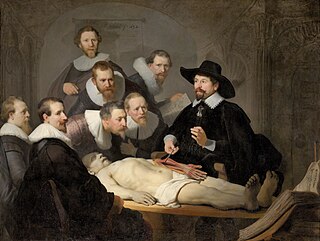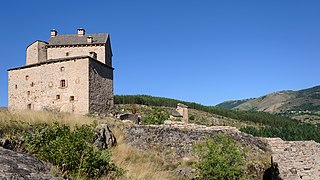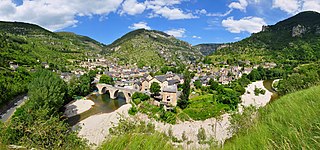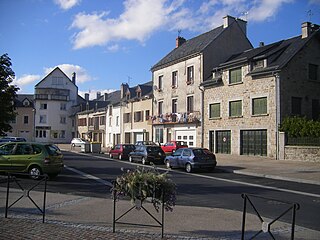| |||||
| Decades: | |||||
|---|---|---|---|---|---|
| See also: | Other events of 1579 History of France • Timeline • Years | ||||
Events from the year 1579 in France
| |||||
| Decades: | |||||
|---|---|---|---|---|---|
| See also: | Other events of 1579 History of France • Timeline • Years | ||||
Events from the year 1579 in France


1632 (MDCXXXII) was a leap year starting on Thursday of the Gregorian calendar and a leap year starting on Sunday of the Julian calendar, the 1632nd year of the Common Era (CE) and Anno Domini (AD) designations, the 632nd year of the 2nd millennium, the 32nd year of the 17th century, and the 3rd year of the 1630s decade. As of the start of 1632, the Gregorian calendar was 10 days ahead of the Julian calendar, which remained in localized use until 1923.

1628 (MDCXXVIII) was a leap year starting on Saturday of the Gregorian calendar and a leap year starting on Tuesday of the Julian calendar, the 1628th year of the Common Era (CE) and Anno Domini (AD) designations, the 628th year of the 2nd millennium, the 28th year of the 17th century, and the 9th year of the 1620s decade. As of the start of 1628, the Gregorian calendar was 10 days ahead of the Julian calendar, which remained in localized use until 1923.

1638 (MDCXXXVIII) was a common year starting on Friday of the Gregorian calendar and a common year starting on Monday of the Julian calendar, the 1638th year of the Common Era (CE) and Anno Domini (AD) designations, the 638th year of the 2nd millennium, the 38th year of the 17th century, and the 9th year of the 1630s decade. As of the start of 1638, the Gregorian calendar was 10 days ahead of the Julian calendar, which remained in localized use until 1923.

Year 1579 (MDLXXIX) was a common year starting on Thursday of the Julian calendar, and a common year starting on Monday of the Proleptic Gregorian calendar.
Year 1296 (MCCXCVI) was a leap year starting on Sunday of the Julian calendar.

Lozère is a landlocked department in the region of Occitanie in Southern France, located near the Massif Central, bounded to the northeast by Haute-Loire, to the east by Ardèche, to the south by Gard, to the west by Aveyron, and the northwest by Cantal. It is named after Mont Lozère. With 76,604 inhabitants as of 2019, Lozère is the least populous French department.

Languedoc-Roussillon is a former administrative region of France. On 1 January 2016, it joined with the region of Midi-Pyrénées to become Occitania. It comprised five departments, and bordered the other French regions of Provence-Alpes-Côte d'Azur, Rhône-Alpes, Auvergne, Midi-Pyrénées towards the north, and Spain, Andorra and the Mediterranean Sea towards the south. It was the southernmost region of mainland France.

Mende is a commune and the prefecture of the department of Lozère, in the region of Occitania, Southern France. Its inhabitants are called the Mendois. The city, including the first traces of dwellings date back to 200 BC, was originally named Mimata, probably in reference to the mountains that surround it.

The Beast of Gévaudan is the historic name associated with a man-eating animal or animals that terrorized the former province of Gévaudan, in the Margeride Mountains of south-central France between 1764 and 1767.

The House of Rohan is a Breton family of viscounts, later dukes and princes in the French nobility, coming from the locality of Rohan in Brittany. Their line descends from the viscounts of Porhoët and is said to trace back to the legendary Conan Meriadoc. Through the Porhoët family, the Rohans are related to the Dukes of Brittany, with whom the family intermingled again after its inception. During the Middle Ages, it was one of the most powerful families in the Duchy of Brittany. The Rohans developed ties with the French and English royal houses as well, and they played an important role in French and European history.

Aubrac is a volcanic and granitic plateau located in the south-central Massif Central of France. This region has been a member of the Natura 2000 network since August 2006. It straddles three départements and three régions. The village of the same name is located in this region.

Gévaudan is a historical area of France in Lozère département. It took its name from the Gabali, a Gallic tribe.

The Château de Miral is a castle in the commune of Bédouès, in the Lozère département, in the Cevennes mountains of south-central France. It is about 10 km east of Florac going towards Le Pont-de-Montvert on road D998. The castle overlooks the confluence of the Rûnes and Tarn rivers.

Sainte-Enimie is a former commune in the Lozère department in southern France. On 1 January 2017, it was merged into the new commune Gorges du Tarn Causses. It was founded in the 7th century by Énimie, who started a convent there after being cured of leprosy in the surrounding waters. It was the site of several monasteries, some of which still remain. Located in the Gorges du Tarn, it is a member of Les Plus Beaux Villages de France association.

Saint-Chély-d'Apcher is a commune in the Lozère department in southern France.

Mende Cathedral is a Roman Catholic Cathedral and Minor Basilica. It is the Seat of the Bishop of the Diocese of Mende, located in the Department of Lozere. The Tourist Office of the City of Mende describes the Cathedral as "A Jewel, the Nerve Center of the City." The Cathedral enshrines the Tomb of Saint Privat. Construction began in 1369 on the initiative of Pope Urban V. The Cathedral was consecrated for the first time in 1469. The Pope Urban V was a native of the region, which had been previously known as the County of Gévaudan, located within the far northern extreme of the Province of Languedoc. After the conclusion of the French Revolution in 1789 all the provincial boundaries were re-mapped. The locale around the Diocese of Mende was redrawn as the Revolutionary Department of Lozere, named after a nearby mountain peak.

The Pineton de Chambrun family is a French noble family, of which several members have taken an important part in French politics. Their nobility was proven in 1491. The Pineton de Chambrun originally come from the Gévaudan region, where many members were mayors or deputies of Lozère.

The Diocese of Mende is a Latin diocese of the Catholic Church in France. The diocese covers the department of Lozère.
The Château du Tournel is a ruined feudal castle in the commune of Saint-Julien-du-Tournel in the Lozère département of France. A former seat of the Barons of Tournel, one of the eight baronies of Gévaudan, it was destroyed during the French Wars of Religion by Huguenot troops under Matthieu Merle.

Antoine Gaston de Roquelaure, 2nd Duke of Roquelaure was a French nobleman and Marshal of France.